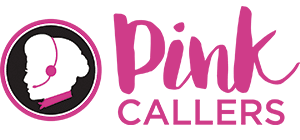Coming up with new, fresh content that scores high on search rankings can be difficult.
If you’ve ever felt stuck in a rut and just can’t get any new ideas flowing, you’re not alone.
But, there is a solution. You can easily avoid these stints of low creativity by using a hub and spoke model to help you generate ideas for content that, when used correctly, will up your SEO game.
While it is not a new marketing concept, this model is used by content creators who are serious about driving engagement and conversions. No matter what you hope to accomplish with your content marketing, organizing your content through a hub and spoke model will help you reach your goals.
Hub and Spoke Model Overview
The hub and spoke model is exactly what it sounds like. Your hub will be a broad, overarching page on your site that talks about a topic that relates to your industry. A hub should work as a table of contents that will connect your readers to your spokes. Copyblogger has a great example of a hub that talks about email marketing and then links to their spoke articles. Each spoke will be a more detailed post on a specific area within your hub’s theme.
A quick example: Let’s say you own a bike store (Get it? Hub and spoke… like a bicycle wheel?) and you create a page on your website that’s all about mountain bikes. Then, in corresponding spoke blogs, you write about different aspects of the mountain bike: maintenance, gear, mountain biking trips, and full-suspension mountain bikes
So your model will look something like this:

You can employ a hub and spoke model for each month, or whatever works best for your ability to output content. As an example, if it’s a month, have your initial hub released on day one of the first week, followed by a blog every two days.
Whatever you choose, make sure each piece is delivered on-time and consistent with the release schedule you’ve created. An editorial calendar can help you with your content marketing management.
Crafting an SEO Friendly Content Hub
Search engines reward sites that set up their content through a hub and spoke model because A.) They incorporate relevant keywords, B.) They do so in an organic, appropriate manner, and C.) Will bring in all sorts of niche consumers who are looking for specific content which will increase traffic and engagement and, if the content is written well, conversions.
The best way to go about creating a hub and spoke model that will boost your SEO is by setting up a keyword hierarchy.
Going back to our mountain biking example, we used the generic, short tail keyword, ‘mountain bikes,’ for our hub. The key to picking a strong keyword is to find one that has a large search volume that is relevant to your consumers. You can do this by checking out Google Ads and doing some keyword research or monitoring social media for popular areas or talking points in your industry. When it comes to social media monitoring, use tools like Hootsuite, Agorapulse, and Sprout Social to find trending keywords.
Once you’ve found a good keyword for your topic, do some long tail keyword research. For those who need a reminder, long tail keywords are typically three or more words long and are used to target a niche group of consumers within the more broad short tail keyword (like how people searching for ‘mountain bike gear’ and ‘ mountain bike maintenance’ were specific subsets within those searching for “mountain bikes”).
You can use Google Ads once again for long tail research, but another great option is Google’s ‘searches related to…’ portion of their search results at the bottom of the page. So go ahead and type your hub keyword into Google and check out the related searches to find some highly relevant long tail keyword options. The long tail keywords you choose will then be the topic of that spoke’s blog.

At the end of your research, you’ll have a thorough hub and spoke model that incorporates a popular topic in your industry, as well as related micro-topics that will help bring in more traffic through an improved SEO.
You can keep diving deeper and deeper into your keywords by getting more and more detailed with each long-tail keyword. For example, with my “Mountain Bike Gear” article, I could link to articles about women’s gear and another about men’s gear.
And, don’t forget to use other digital avenues alongside your content to complement your hub and spokes. Send out emails when a new blog is published, post on social media to reinforce the message of those blogs, and utilize banner ads for each hub and spoke model topic.
Keep It Simple
Content marketing doesn’t have to be overly complicated.
You don’t need to be stressed about where your next content will come from and what the topic will be as long as you stick to a hub and spoke model. It’s a simple model that will keep your content relevant to a specific area of relevance and keep your reading coming back for more. It reinforces areas that your consumers are interested in by looking at a specific theme more and more in-depth from different perspectives.
Use a hub and spoke model to help you optimize the factors that really matter when it comes to what search engines like. You’ll be glad you did.















